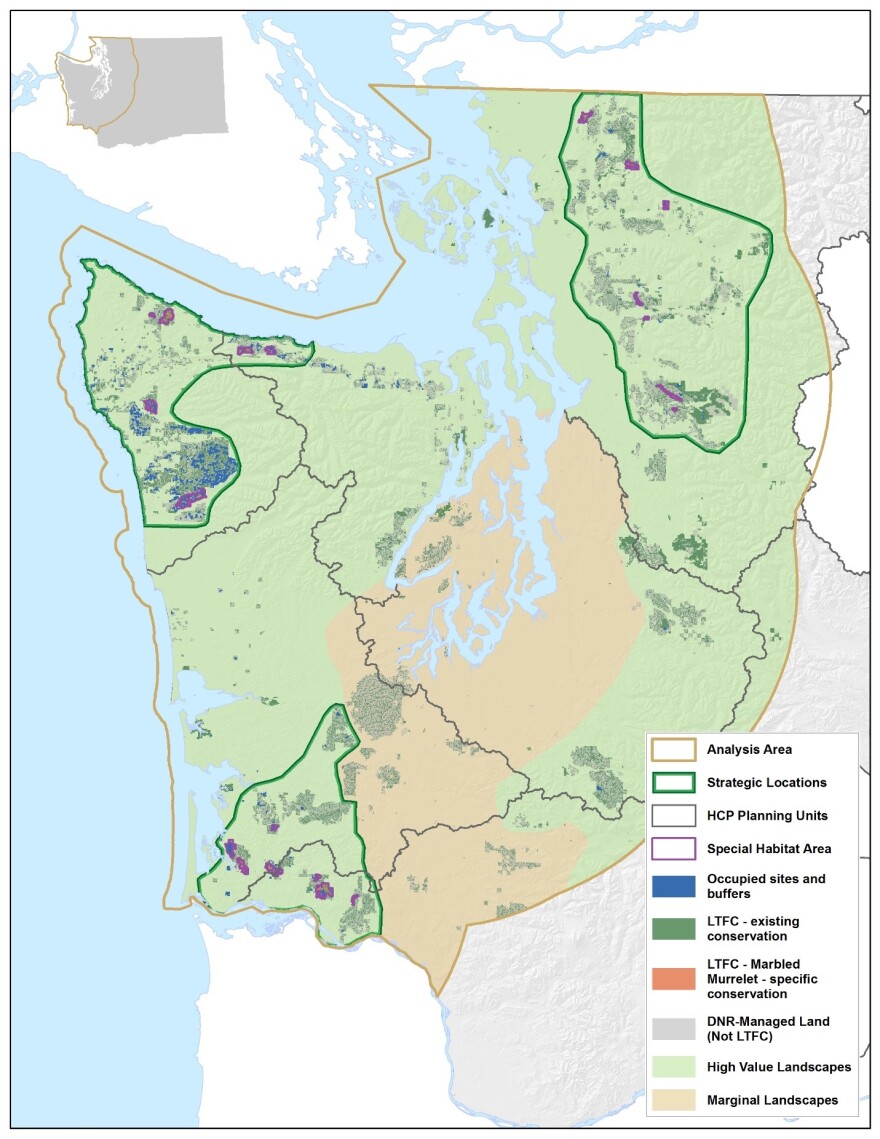For more than 20 years, mysteries surrounding an endangered seabird have suspended logging activities on about 170,000 acres of state trust lands in Washington.
Now, the state Department of Natural Resources says it’s learned enough about the marbled murrelet to protect its habitat and free up some of the lands that were previously tied up.
The agency releases its final environmental impact statement (EIS) for a long-term conservation plan on Friday.
An interim plan was established in 1997, to give scientists more time to study nesting habits and other factors affecting reproductive success of the robin-sized diver. The fast fliers that are rarely seen can commute more than 50 miles between the Pacific coast where they feed and old growth forests where they nest, making them a challenging subject for biologists.
The new plan is one of eight options evaluated in the EIS.

"It's really in the middle of the range of alternatives that we put together," said Angus Brodie, who has been working on marbled murrelet planning at DNR on and off for more than 15 years.
He says the option they chose strikes the best balance between complying with the Endangered Species Act and meeting the state's responsibility to generate revenue through sustainable forestry.
After more than 20 years of study, Brodie says they now have a better understanding the types of forests the elusive bird is using on state lands.
"We also know a lot more about how disturbance activity, such as recreation, road building, timber harvest can impact the reproductive success of this species," he says.
For example, recreation too close to areas where murrelets nest can attract crows and other corvids, who prey on the murrelets and their young. And the endangered seabirds only lay one egg per year. Only about 6,000 of the species are believed to remain in Washington state.
Public Lands Commissioner Hilary Franz says the state's analysis is based on thorough science. And she says it’s time to move forward and release some trust lands for sustainable logging. The plan chosen would free up more than 100,000 acres that were set aside more than two decades ago.
“It’s a win for the marbled murrelet and habitat conservation and it’s also a win for our rural economies and our communities,” Franz said.
Brodie says he's already received push back from environmental groups, as well as foresters and rural communities, all saying this plan does not do enough. But he sees that as a sign that the agency has done its best.
“You will hear from both sides that they’re not really happy with the outcome," he says. "That probably tells you — we’re probably somewhere close to being in the right place, of that compromise."
The state Department of Natural Resources stresses that this is a conservation plan to support the recovery of the marbled murrelet, not a complete recovery plan. Federal lands make up the greatest percentage of murrelet habitat in Washington. State forests comprise about 14 percent.
The U.S. Fish and Wildlife Service and the state's Board of Natural Resources must sign off on the plan before it's enacted. New timber harvests would not likely commence before late 2020 or early 2021.









